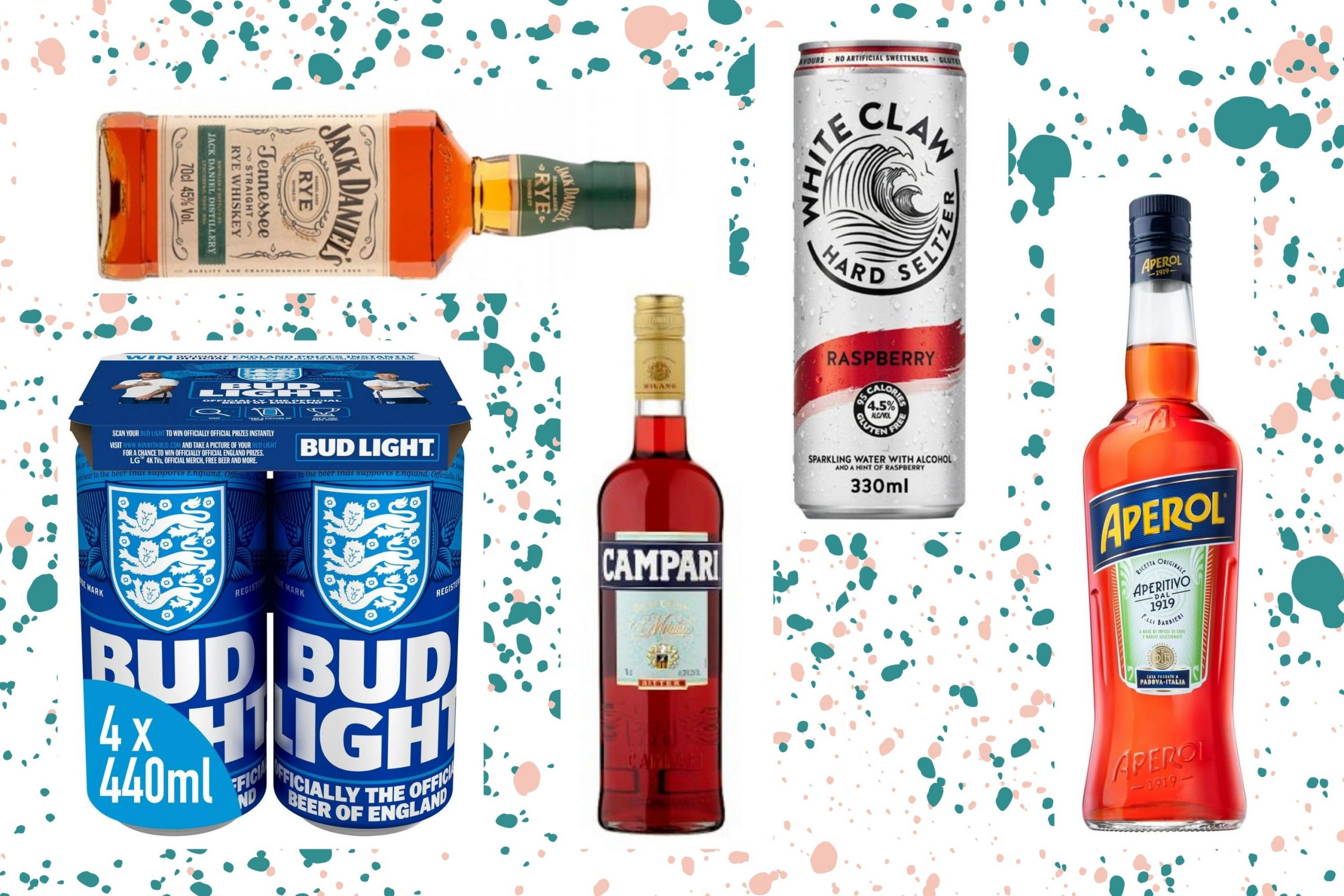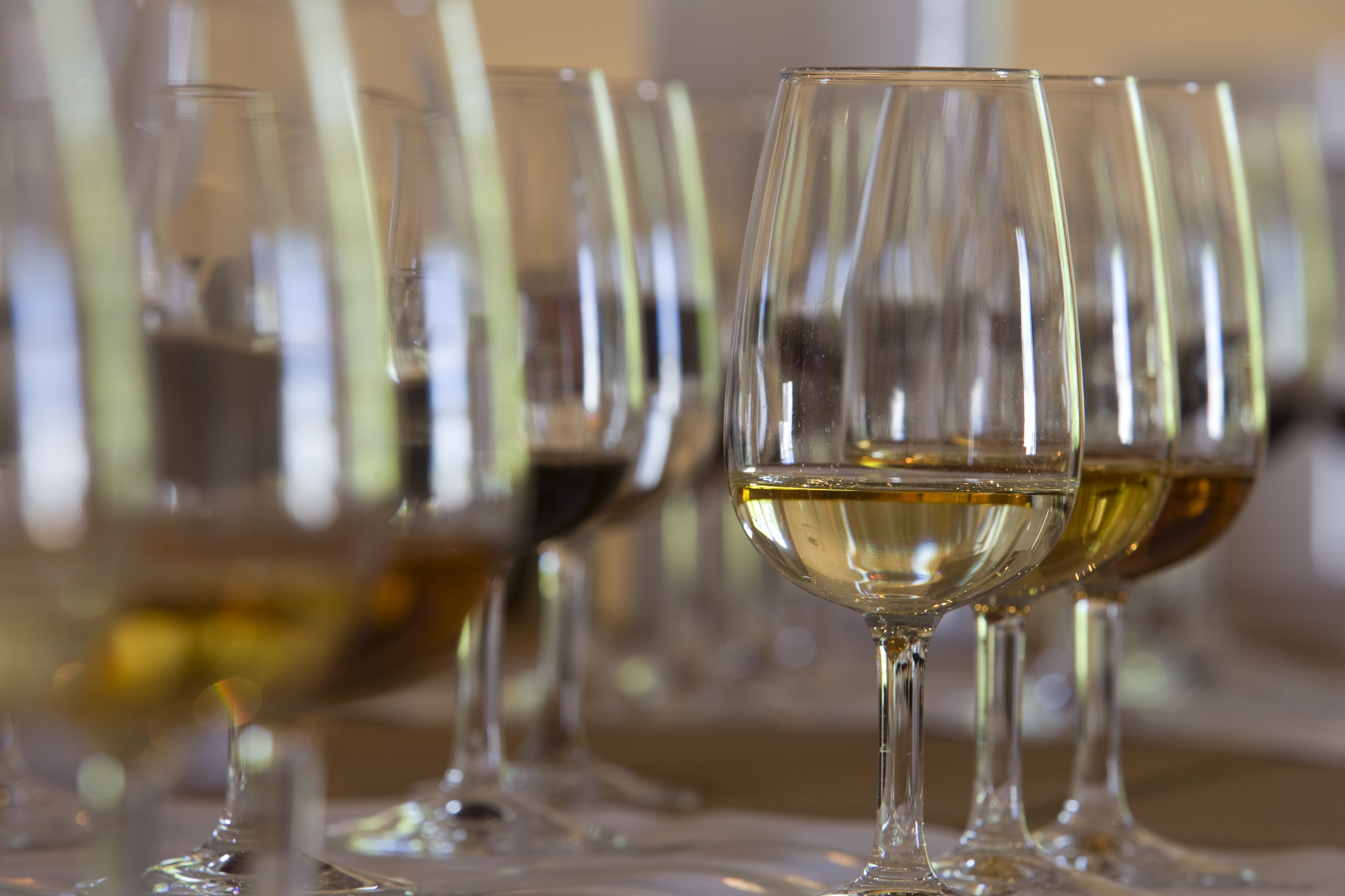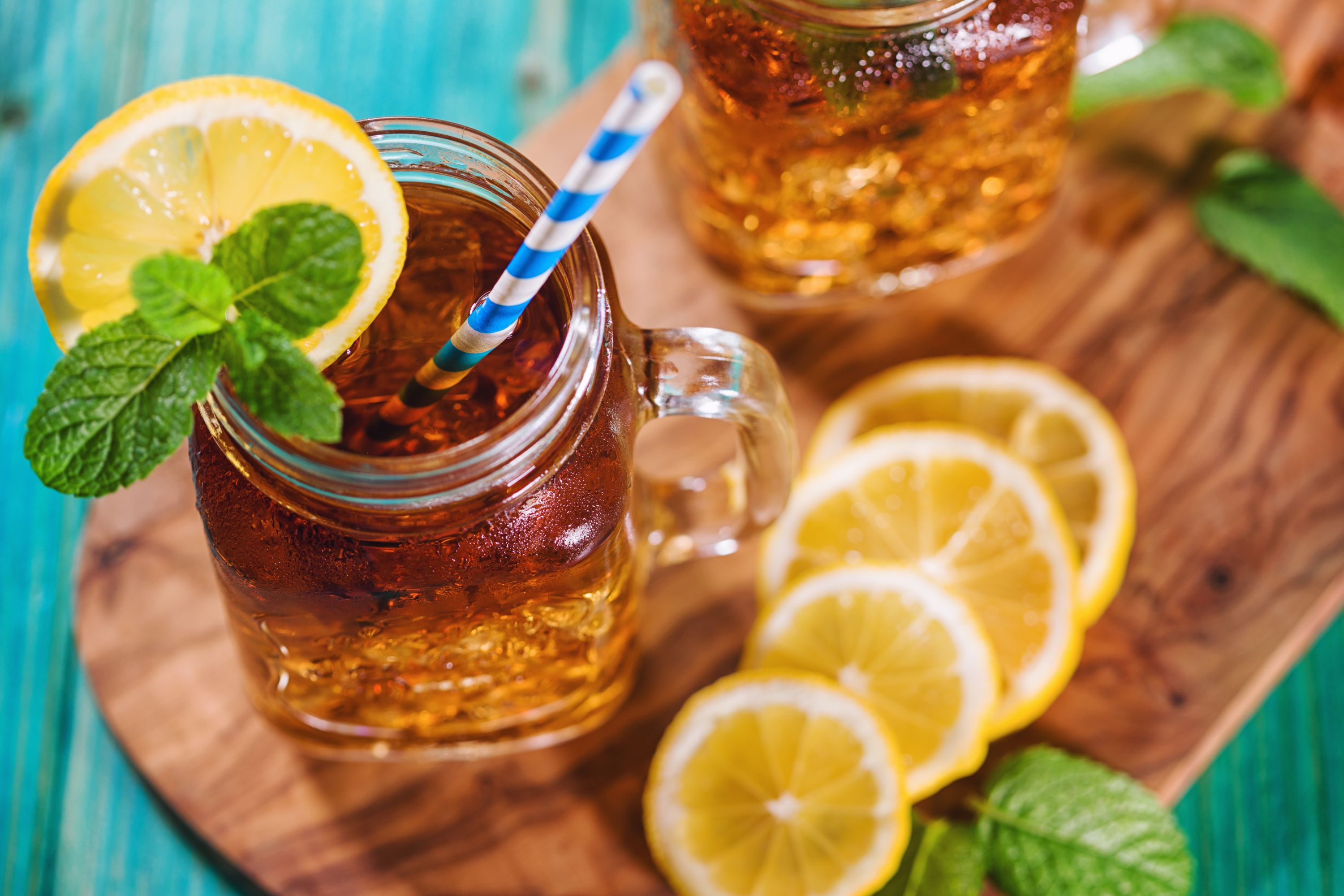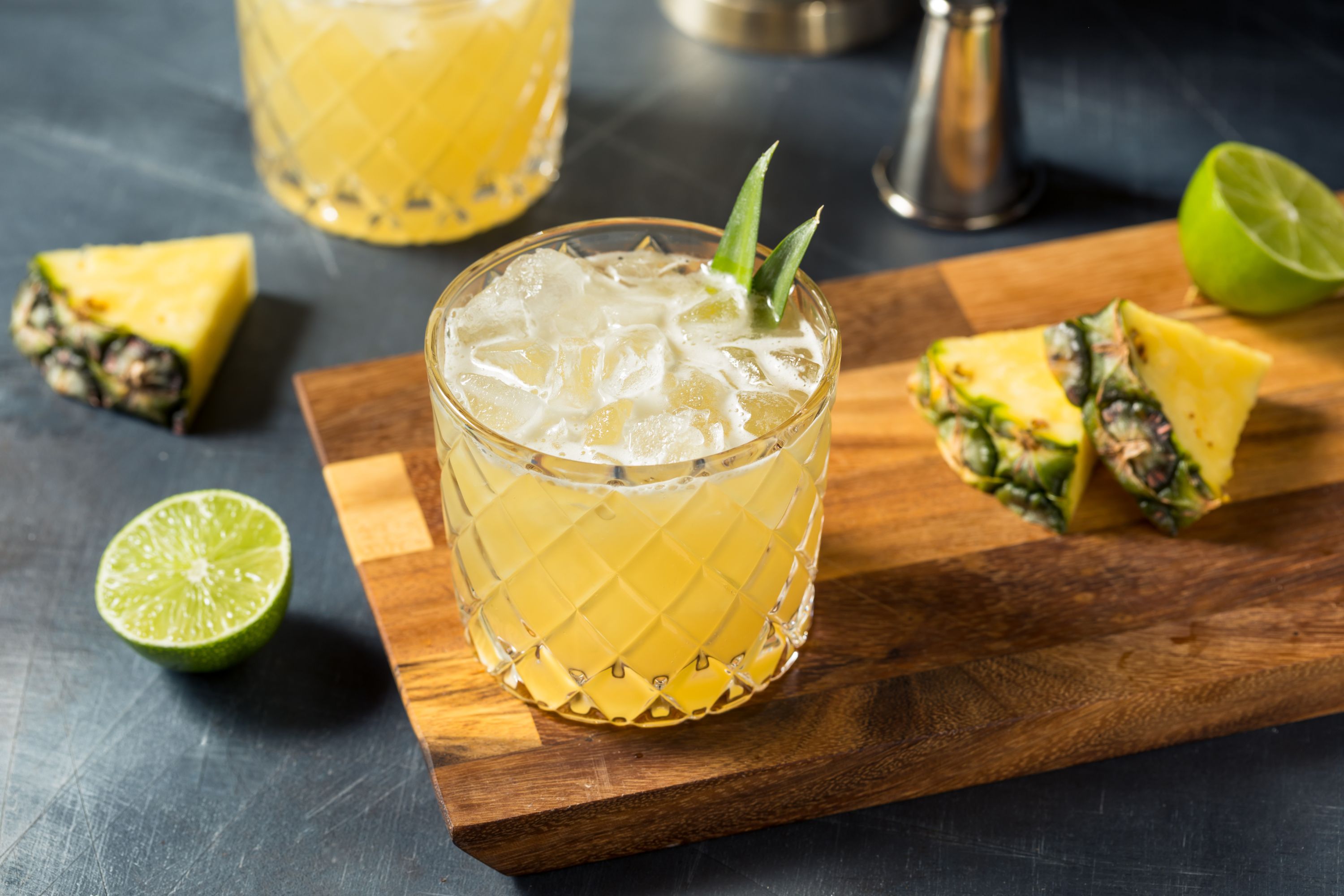Low-calorie alcohol: 18 of the best low-calorie alcoholic drinks
Watching your weight but love a tipple? Check out these low-calorie alcohol ideas.


Ellie Hutchings
If you're on a weight loss journey or just trying to make healthier choices, you don't need to give up alcohol altogether. Try opting for low-calorie alcohol instead.
From low-calorie wine and low-calorie beer to different cocktail options, there are plenty of ways to enjoy alcohol while maintaining a healthy lifestyle. While the healthiest choice of all might be to give up alcohol and swap to non-alcoholic wine instead, for those who enjoy a glass with dinner or something sparkling when they're celebrating, consuming alcohol in moderation along with a balanced diet won't do much harm.
Dietician Kimbeley Gomer explains, "It is possible to lose weight while still enjoying alcoholic drinks - I have seen my clients who are social drinkers still make fantastic progress with their weight loss goals - but less is better, and be aware the calories add up. However, bear in mind that as we get healthier, we may become more sensitive to all types of toxins including alcohol. In addition, alcohol can negatively affect sleep, a side effect that does not complement health and weight loss goals."
It's not just the alcohol itself that can increase your daily calorie count. Adding mixers to your drink of choice such as lemonade and fruit juice will bump up the calories, and means adding lots of sugar to your drink. With this in mind, we've rounded up a selection of the best low-calorie alcohol options to consider next time you're out for a drink.
18 low-calorie alcohol options
1. Vodka, lime and soda
Calories: 54 per 25ml
One of our favourite low-calorie alcohol options, consisting of 1 shot of vodka (25ml), a dash of fresh lime, and then filled with soda, this is a classic go-to drink if you want to keep your calorie intake down. Kimberly tells us that spirits like vodka, whiskey brandy, gin, and tequila contain an average of 100 calories per jigger (that's around 44ml), and are usually a good low-calorie option depending on what you mix them with.
2. Gin and slimline tonic
Calories: 61 per 25ml
Parenting advice, hot topics, best buys and family finance tips delivered straight to your inbox.
Made from one shot of gin (25ml) topped with slimline tonic, this is another drink that'll go down easily. And if you're opting for a drink that includes a mixer, diet or slimline tonic is second to soda for the best low-calorie option. Kimberly says, "Besides seltzer, choose diet tonic or a diet soda. If you're making your drink at home, you can use a sugar-free mixer instead."

3. Tequila, lime and soda
Calories: 48 per 25ml
Similar to vodka, lime and soda but with one shot of tequila (25ml) as the spirit, this is a light, refreshing drink that's significantly lower in calories than a margarita, because of the absence of sugar syrup. If sticking to a low-calorie count is your goal, it's always a good idea to opt for fresh lime juice over lime cordial.
4. Champagne
Calories: 89 per 125ml
A small glass (125ml) of champagne comes in at under 100 calories, which means you can have a couple without going over the 200 calorie mark. And if you want to cut down on calories further, this is another drink you can top up with seltzer, or perhaps add some fresh fruit into your glass to make the amount of alcohol you consume smaller.
5. Prosecco
Calories: 89 per 125ml
Surprisingly low in calories, prosecco contains around 89 calories per small glass (125ml) - the same as champagne - and it's a more budget-friendly option. So next time you're having a celebratory drink, you don't need to feel guilty about having a glass or two of something bubbly.

6. Hard seltzer
Calories: 95 per 330ml
Increasingly popular, hard seltzers are usually made up of a spirit, sugar, fruit flavouring and lots of soda. Because of the soda content - which contains zero calories - a 330ml can of hard seltzer usually comes in under 100 calories. White Claw is a popular option, and flavours include mango, black cherry, natural lime, and raspberry.
7. White wine spritzer
Calories: 80 per 125ml
A good option if you're trying not to drink so much wine, a white wine spritzer consisting of a small glass (125ml) of white wine and the same amount of soda water will set you back around 80 calories. Kimberley says soda water can be a "secret weapon" when it comes to watching calories, and says, "Adding seltzer to any cocktail – think wine spritzer – provides 0 calories and 0 grams of carbs." She also advises adding ice to stretch your drink.
8. Dry sherry
Calories: 98 per 1ooml
Most sherries are low in calories but are still flavourful. In addition, sherry is best sipped slowly and you're unlikely to be gulping this drink down and ordering another straight away, meaning fewer calories will be consumed by default.

9. Dry cider
Calories: 67-80 per 150ml
Bone-dry perry and cider are both great alternatives to sparkling wines and have less alcohol - usually around 67-80 calories - per 150ml glass. Flavoured cider is a different story, however, as these often contain lots of added sugar. As Kimberly explains, "These are essentially spiked fruit juice."
10. Dry white wine
Calories: 100 per 125ml
Dry wines with 10-12% ABV have around 100 calories for a small 125ml glass, so look around for white wine containing less alcohol by volume. Many Italian wines are a bit lighter - look for ones that contain 12% ABV or less. Meanwhile, Kimberly says that sweet wines - such as Riesling, Moscato, port, and dessert wines - are best avoided.
11. Low alcohol wine
Calories: 20-55 per 125ml
Low-alcohol wine alternatives range from 20-55 kcals for the same 125ml glass, depending on if they are fully dry or have some sugar to balance the absence of alcohol. Opting for low-alcohol alternatives has the added health benefits that come with consuming less alcohol too, making them a great drink option for those trying to make healthier choices.

12. Amaro liqueur
Calories: 97 per 50ml
These highly aromatic bitter liqueurs are not to everyone's taste, but on a positive note, it means you sip them. What's more, they're considered digestifs, which are thought to aid digestion after a meal. Amaro has around 97 calories for a generous 50ml double, and Aperol, Campari, Fernet Branca and Jägermeister are all regarded as amaro liqueurs - all of which can be enjoyed with soda water for zero added calories.
13. Bloody Maria
Calories: 97 per 200ml
Love a Bloody Mary but want to keep your calorie intake down? Try a variation on the famous cocktail. The Bloody Maria combines 150ml tomato juice, 28ml Mezcal, 28ml cucumber juice and spices to taste, all at 97 calories. If it's a cocktail you're after or something to sip alongside a boozy brunch, this could be the best low-calorie option for you.
14. Spiked Earl Grey lemonade
Calories: 85 per 100ml
If you're partial to a Long Island Iced Tea but you're looking for a version that's not as calorific (or as deadly), this is a fun drink that might be worth trying. Spiked Earl Grey lemonade is made up of 25ml rye whisky, 75ml cold Earl Grey tea, and 125ml slimline lemonade and is only around 85 calories.

15. Light beer
Calories: 80-90 per 330ml
As a general rule, the lower in alcohol beer or wine is, the lower in calories. Table beers and micro-IPAs up to 3% ABV usually stay under 90 calories per 330ml, while according to the NHS, a pint of 5% strength beer is the calorie equivalent of eating a Mars Bar (239 calories).
16. Aperol Spritz
Calories: 190 per 50ml
The Aperol Spritz is everyone's favourite summer cocktail, made up of 75ml prosecco, 25ml soda water and 50ml Aperol. It comes in under the 200 calorie mark and, as a long, slightly bitter drink that's easier to savour than glug, it will last much longer than other cocktails - especially thanks to the ice. So, if it's a cocktail you're after, an Aperol Spritz is a lower-calorie option than many others. "Avoid the fancy cocktails and mocktails made with fruit juices, fruit puree, sugary syrups and other add ins," says Kimberly.
17. Shandy
Calories: 115 per 0.5 pint
Next time you're in the pub, instead of asking for a pint of beer choose half a pint of beer in a pint glass topped with diet lemonade to cut down on calories. However, this might only be a better option if your beer of choice is on the higher end of the calorie scale, as this drink will only cut your calorie intake if the diet lemonade is lower in calories.
18. Rum and pineapple
Calories: 180 per 50ml
The final of our low-calorie alcohol options, a double (50ml) white rum with pineapple juice makes a great substitute for a calorific pina colada. It's not as low in calories as other options on this list, but it might hit the spot if you're after something fruity. Kimberly points out that rum is one of the lowest-calorie spirits - at 54 calories per 25ml shot - so it could be an option to consider depending on what you are mixing it with.

Can you lose weight and still drink alcohol?
Yes, you can drink alcohol and still lose weight, as long as you are drinking it in moderation. Like with any high calorie treats - such as chocolate and crisps - you don't need to cut it out completely to meet your weight loss goals.
Kimberley tells us, "Many of us enjoy an alcoholic drink, but before you imbibe it’s best to understand how alcohol can affect both health and weight loss efforts. Alcohol is both a toxin and inflammatory substance for our bodies - our body does not have the ability to store it, so when we drink alcohol it immediately goes to the liver where it is prioritised as an energy source."
She goes on to explain, "We will burn alcohol calories first, so burning stored body fat (the end goal of weight loss) is slowed. This is why alcohol can be the culprit in a weight loss plateau or even weight gain."
To keep health risks from alcohol to a low level, the NHS recommends drinking no more than 14 units of alcohol a week on a regular basis. For reference, one shot of spirit is one unit, while a small glass of wine is around 1.5 units and a 330ml bottle of 5% lager, beer or cider is about 1.7 units.
Meanwhile, alcohol can lower blood sugar. So if you want to limit what you drink in order to consume less calories, make sure you don't drink on an empty stomach and have a good meal or snack before the event that includes some protein, healthy fat, and veggies.
Make sure your friends, family and whoever you're going out with don't push you into drinking more than you planned for, and allow yourself to enjoy holidays, parties, and events without making alcohol the centre of the entertainment.
Find out more about the effects of alcohol on skin and how to repair the damage, along with some of the benefits of not drinking alcohol. We've also rounded up our picks of the best Aldi gins and the best Aldi wines to try.

Kimberly is a dietitian with a Master's in Nutrition in private practice. She has 25 years of experience in coaching clients for health and wellness with a speciality in weight management, diabetes, insulin resistance, and healthy living. She was previously the Director Of Nutrition at the Pritikin Longevity Center for 10 years, before opening her own private practice. She also serves as the Director of Nutrition at Body Beautiful Miami.

Debra Waters is an experienced online editor and parenting writer. She also has a strong background on health, wellbeing, beauty, and food. She currently writes for Goodto and Woman&Home, and print publications Woman, Woman’s Own, and Woman’s Weekly. Debra has written for What to Expect, Everyday Health, and Time Out. In addition, she has had articles published in The Telegraph and The Big Issue.
- Ellie HutchingsFamily News Editor